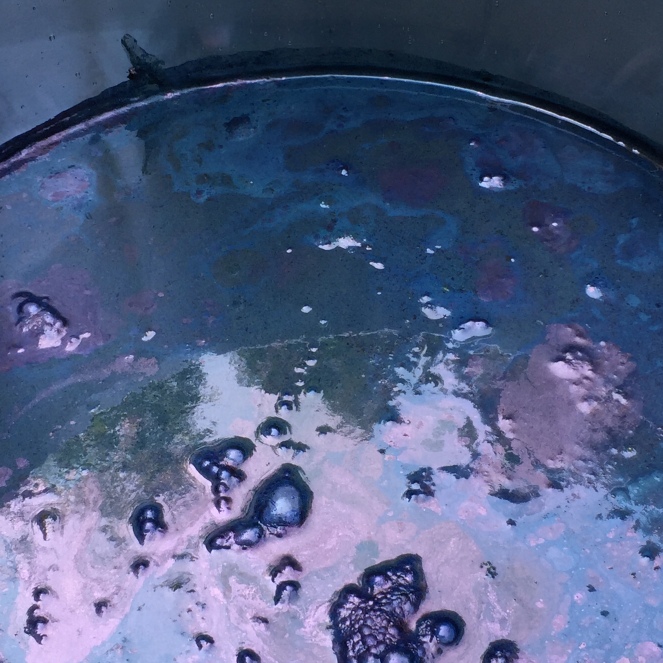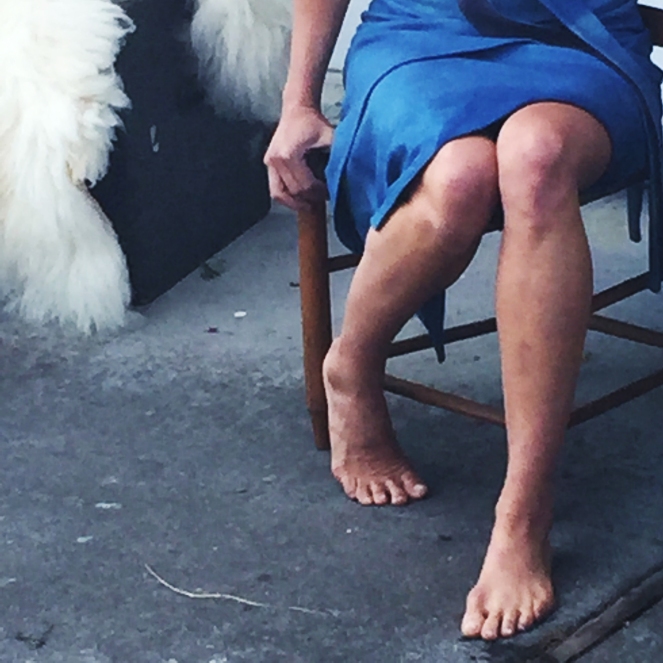
I often wonder what the processes are for things that seem to magically appear, like a fashion show. And so I’m writing this for those of you who wonder the same, at least from the designer’s point of view, and revealing my entire process to you. There is a lot more that goes into it from the organizers’ end, but here is an overview of my “road to the runway”!
In April of this year, I applied to be a designer at the 2017 Fibershed Fashion Gala. But it started before this. I had been knitting and working with natural dye for a number of years so I had some content to send. I made sketches and gathered photos of past work, and designed a flyer with these along with a vision of what I’d like to do. I also already had a naturally-dyed clothing business that I had been spending time cultivating for the past year or so, with a functioning website, blog, etsy store, and instagram, etc.
What I think is significant here in the application process, is that what I ended up making was different than what I originally planned to make, and what was probably most relevant initially was that I showed that I could follow through responsibly and had some experience. Part of this was using clear communication and responding promptly to emails and requests and by providing all the information requested, in the manner requested. I can not stress to you how important this part is! Another thing to realize is that it was all carefully coordinated in between everything else, other projects, kids, relationship, etc.

After being accepted to the show, there were dozens of emails and messages to arrange fabric, yarn, dyeing and pieces with other designers. Again, clear and regular communication was important for a good collaboration.
I sketched more ideas and then began considering the fabric itself. It was a thicker wool twill fabric that frayed easily. I realized I wanted to drape it on the bias to give it some flow, but that the weight of it was like denim or even leather, which gave it natural structure. So I decided on a bias cut halter top, because it’s not often you have a top made of fabric that is so structured, you don’t need to wear a bra, and that is always the issue with halter tops.
I made a denim prototype of the top, then realized that it was going to need to be lined if I wanted it to look nice, and that the double layer would actually enhance the structure. Then I decided to make it reversible so I could use two dye colors and make it more versatile to the end wearer. I tried it on my model—my lovely friend Natalia Bertotti—and posted it on instagram to see what people thought. The reaction was positive so I kept going.
I made another prototype out of twill and made it reversible. It worked and I made a bias cut wrap skirt to go with it, and did another instagram post. No secrets here! Wrap skirts always come open—my goal was to make one that did not. The weight of the fabric was helpful and I wrapped it all the way to her side so even if the front did open, there was fabric there. The design tapers in the front so much though, that it helps keep it closed! It looked great on Natalia so I was ready to cut my fabric.
The fabric itself was nerve wracking. It was so expensive and in limited quantity I did not want to make a mistake. It also needed to be finished in the washer in a certain way that I had not done before. So eventually, I took it to a friend with the appropriate washing machine and finished it per the Huston Textiles instructions. I hung it on my clothesline wet—a huge creamy swath of wool fabric that divided the backyard in half. The kids had to play in the front yard that afternoon.

At this point, I needed to make a final decision on dye so I called Heidi Iverson, and we decided on a dye day. But first, I needed to cut everything out. So I cut all the pieces for top and skirt out of the cloth, while kids were at school and while my partner was at work, listening to podcasts all the while. Then I used an entire spool of silk thread to sew around each piece, preventing the almost immediate fraying. Even just lying there, the fabric frays if cut across the grain! But it’s easily remedied by the sewing around the edges. Now I had a pile of fabric pieces, one of which was huge—it was almost the entire skirt piece.
I like darker colors for clothes, personally. So did Heidi, as it turns out. I also did not want to mordant the fabric, so I wanted to work with color that didn’t need it, like indigo, oak gall, pisolithus mushroom or eucalyptus. We decided on indigo and oak gall and on dye day, we simmered up a pot of oak gall and iron. Then we dipped my various random pieces of fabric for the top, an entire bathrobe and some other pieces Heidi needed to dye black-gray. Meanwhile the indigo was fermenting away and finally we were ready to dip everything else blue. It was pretty hilarious and fun, and midway through, Heidi made us a fabulous lunch from farmers’ market greens, radishes, and eggs from her chickens. The blue was intense, and iridescent, as indigo vats are, and we had an hour left before we both had to move on to our next things and so we dipped furiously until all the little pieces were done and hanging on the line.
Then I folded all my wet gray and blue pieces up into a plastic bag and took them home, rinsed them and hung them to dry. Now I still had a pile of fabric pieces, but they were blue and gray. I hoped I had colored each piece the right color!
That next week, after wrapping up the day’s work on another project, I sewed the top and the skirt together and the fabric was so beautiful—easy to sew and really soft and comfortable. It took a few evenings to assemble and into the night to do the hand sewing. It was now ready for the model fitting and photo shoot.
On photo shoot day, Natalia and I drove up to Mill Valley along with all the other designers and models. She had her makeup and hair done—I asked for a Tilda Swinton look with bare makeup. Then we did the photoshoot and the lovely Paige Green took some gorgeous photos of her. I couldn’t help myself and snapped the photos you see here from the sidelines.
When it was all done, Natalia was ready with fabulous hair and makeup to go to a wedding she was hosting at her art studio in Petaluma. And I went home to take my son to a sleepover and meet my sister for an hour before she returned to Seattle, then worked the rest of the day with my partner on an art film we are producing.
Now we await this weekend’s show and look forward to seeing the looks on the runway! It’s work, but the kind of work I love doing: coordinating details, contributing to a larger vision, collaborating with other people, and being personally creative.
Find tickets to the fashion show here


Wonderful post Karen. Say did you see this? https://mobile.nytimes.com/2017/09/18/science/mexico-textiles-natural-dyes.html?referer
LikeLike
Thanks Diana, so great!
LikeLike